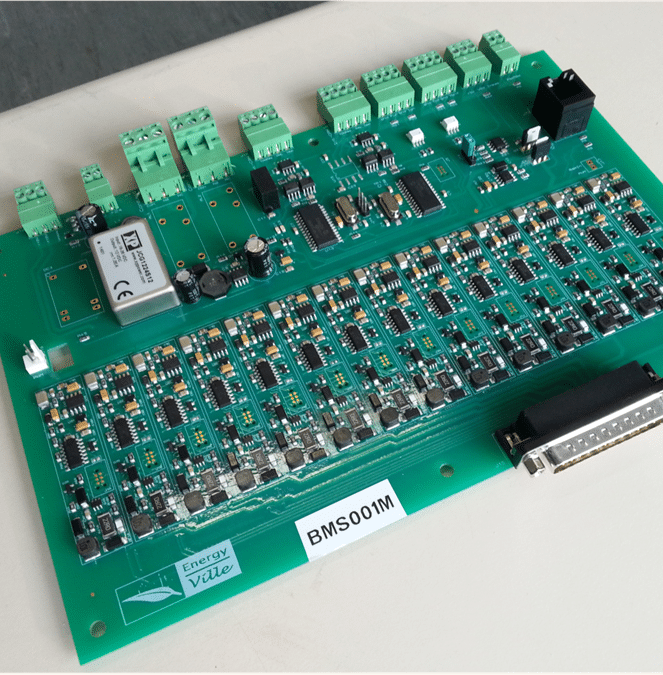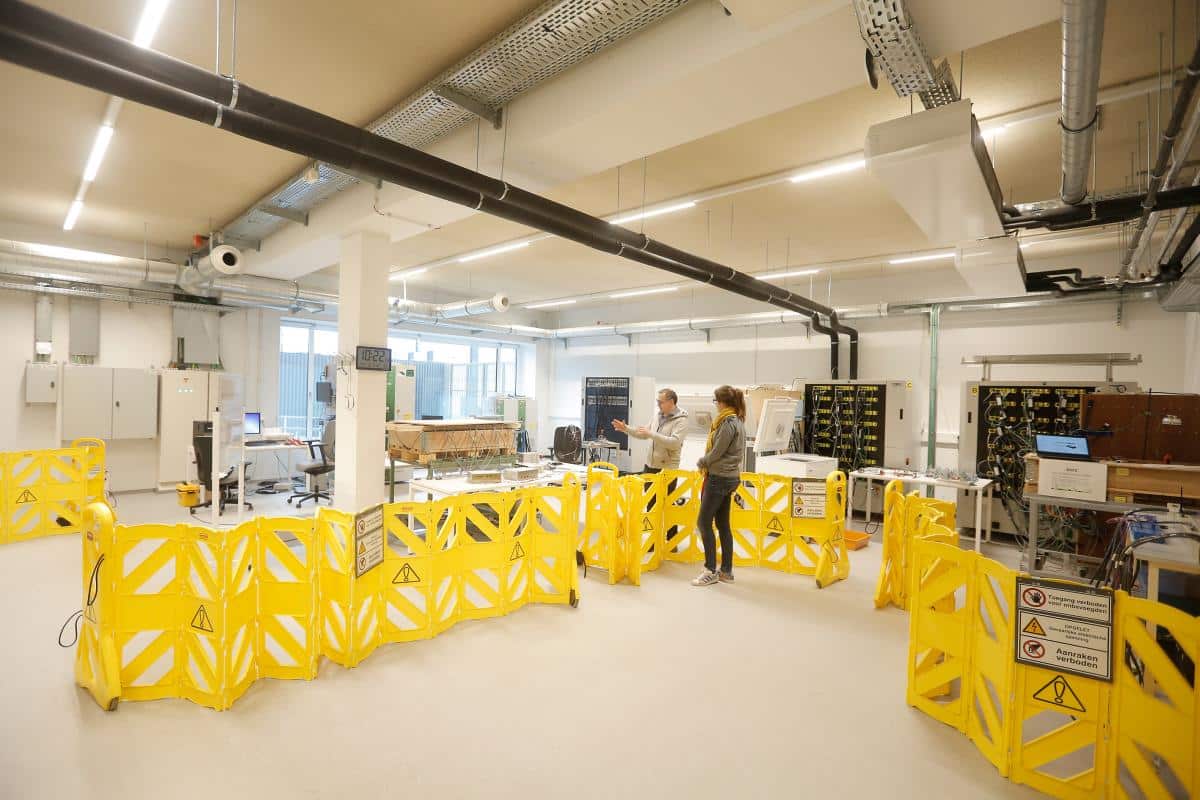BattSense
The cost-efficient, modular, high performant BMS for all your mobile and stationary energy storage packs
The BattSense battery management system with dynamic cell balancing is designed to provide maximal safety, efficiency and an increased lifespan for cell-based electrical energy storage solutions.
Electrical Storage Products Targets
- Stationary electrical energy storage systems coupled to renewable energy sources
- Mobile electrical energy storage systems for cordless applications
- Automotive batteries
- Peak power shaving solutions for industrial and railway systems
Battsense Architecture
- Modular concept supported by a master/slave configuration
- One master to manage 2 slaves for a total of 42 cells
- Masters can be placed in cascade, in series or in parallel for complex battery packs
- The master controls all cells, using individual voltage and balancing units (VBUs) that are integrated into the electronic configuration
- Power for VBUs is provided from the master, not the cell
- Configurable remote access with data logging is possible
- Master-to-master communication via CAN bus

BattSense Features & Benefits
IMPROVING PERFORMANCE
- Simultaneous measurement of the voltage of all cells to ensure accurate calculation with two-digit performance improvement of the state of charge and combine it with an estimate of the State of Health (SoH)of the battery.
- Permanent dynamic cell balancing during charging and discharging of individual cells
- Increase in cell life expectancy repairing cell imbalances at an early stage
- Battery is kept in balance which ensures optimal performance of the battery system
- Dynamic and safe processing for improved battery capacity utilization, including voltage, current and temperature interdependence
OPERATION IN UTMOST SAFETY
- Safety measurements at both cell and system levels (voltage, temperature, current, isolation fault detection) with configurable notifications and alarms
- Dynamic and safe workshop for additional individual cell protection
- Regular checks of physical connections between cells and voltage balancing units to further improve reliability
- Reduced heat dissipation due to limited balancing currents which reduces costs in electronic components
- External power supply to ensure better battery casing life
- Charge and discharge relays are operated independently
INCREASED FLEXIBILITY
- Easy to install with automatic configuration to reduce installation and maintenance costs
- Remote communication possible to perform configurations and firmware updates remotely
- Customizable model-based multi-chemistry secondary cell support: Li-Ion, Pb-Ac (and NiMH under validation)
- Support in Ultra-Caps / Lithium-Caps enabling hybrid configurations of battery cells and ultracaps
- High-current battery pack design (48Vdc) possible
- High voltage pack design up to 800Vdc (210 cells in series)
ADVANCED COMMUNICATION
- Data logging via optional SD card
- Remote management via GPRS, TCP/IP
- Ethernet and CAN bus for power management support

BattSense specifications
- Current requirements: < 15 mW/cell (not powered from individual cells)
- External power supply: 18..32 VDC
- Current drain from cell: ~ 5µA
- Number of cells: Up to 42 cells per master; up to 31 masters
- Dimensions: 171.5(W) x 263(L) x 103(H) mm (max. 42 cells)
- Conversion accuracy/resolution: 4mV/2.44mV
- Sampling frequency: 5Hz at system level
- Conversion time: 0.25ms
- Cell voltage range: 0 – 5V
- Measurements voltage/current: simultaneous
- Master data interface: CAN bus 500kbit/s – 11bit IDs
- Remote access interface: UTP, GPRS
- Digital I/O: 4 isolated inputs, 2 relay outputs
- Analog inputs: redundant voltage for LV-25P; hall current sensor
- VBU temperature sensor: input for NTC 10kOhm (max. 1/cell)
- Temperature input range: -20°C..80°C, 0.5°C resolution
- Isolation voltage (power): 1500 V
- Isolation voltage (CAN bus): 2500 V
- Ambient temperature: -20°C..65°C
- Certificates
- Low voltage directives
- EMC tested for compliance:
- (CA) ICES-003 Issue 6:2016
- (US) FCC Title 47.Part 15
- (EU) for Immunity: EN 61000-6-2:2005 (Industrial)
- (EU) for Emission: EN 61000-6-3:2007 + A1:2011 (Light Industrial)
- Cell connection interface: DB25
- Patents:
- EP 3061197 A1: Method and system for providing pulsed current and data on a bus
- EP 2101388 B1: Load balancing circuit for ultracapacitors and lithium batteries
- EP 2302757 A1: Method and system for balancing electrical energy storage cells
- EP 2230529 B1: An energy cell system with means for detecting a discontinuity
- EP 1265076 B1: Safety device for monitoring the insulation of a dc bus
